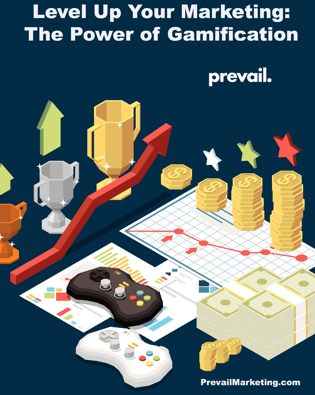Level Up Your Marketing: The Power of Gamification (New eBook)
Gamification has taken the marketing world by storm. It is a powerful tool that can help businesses increase client retention and create brand advocates.
GAMIFICATIONMARKETINGBRAND ADVOCATESREFERRAL PROGRAMSINFLUENCER MARKETINGGROWTH
Bill Arnold
11/10/20233 min read


Gamification has taken the marketing world by storm, and for good reason. It is a powerful tool that can help businesses build client retention and create brand advocates. By incorporating game elements into marketing programs, companies can engage their audience in a fun and interactive way, leading to increased customer loyalty and advocacy.
We have become a gaming nation. Every social media platform is saturated with ads and people who play games to entertain themselves and pass the time. Most people have at least one game on their phone they pull up when they are bored or waiting.
Gamification takes advantage of behavior that already exists to keep customers engaged and to weaponize brand advocates to take action on behalf of the brand.
Prevail Marketing has just released a new twenty-two-page ebook that examines the following:
What is gamification marketing
The elements comprising a good gamification program
The psychology of gamification (Why it Works)
Proof that it works (The Numbers)
How to use gamification for client retention
How to use gamification to weaponize brand advocates
How to start a gamification program
Tips/tricks/recommendations.
One story, pulled from the eBook, shows the power of gamification when conducted by the company that originated inbound marketing. Back in the 2015 timeframe, HubSpot implemented its gamification program called HubStars. This program has now been mothballed, but it was the perfect example of how gamification can secure new business.
HubStars would bring on a new class of its most ardent brand advocates each year. HubSpot made sure to foster a sense of community in this group by periodically having meetings and touting how special the members were. We were told this was an experiment, and the purpose was for there to be a friendly competition among the members to earn prizes and badges of distinction.
HubSpot would award points to these brand advocates if they did specific tasks. Those points could be accumulated and exchanged for gift cards, swag, or even tickets to their annual Inbound Conference in Boston. At first, the tasks were quite simple, introduce yourself to the group or complete your LinkedIn profile. However, the real purpose and value soon became apparent.
These points were conferred for such things as:
writing a blog that spoke to the virtues of HubSpot
making a referral of a potential HubSpot customer
providing a testimonial or recommendation.
One of the key benefits of gamification is its ability to create a sense of excitement and challenge for customers. By introducing game mechanics such as points, badges, and leaderboards, businesses can incentivize customers to actively participate in their marketing programs, attend webinars, and open emails. This not only keeps customers engaged but also encourages them to spend more time interacting with the brand.
Gamification can be used to keep the customer buying. Every time they make a purchase, they are awarded points. Think of the airline industry which awards points for traveling on their airline or by making purchases on a credit card they offer. I know executives who will go out of their way and be inconvenienced just to earn miles on a particular carrier.
Furthermore, gamification can foster a sense of community among customers. By incorporating social elements into marketing programs, such as allowing customers to compete with each other or share their achievements on social media, businesses can create a sense of camaraderie and encourage customers to become brand advocates.
Another advantage of gamification is its ability to collect valuable customer data. By tracking customer interactions and behaviors within the game, businesses can gain insights into customer preferences and tailor their marketing strategies accordingly. This data can be used to personalize marketing messages, create targeted campaigns, and ultimately enhance the overall customer experience.
Moreover, gamification can help businesses create a memorable and positive brand experience. By designing games that align with the brand's values and identity, companies can reinforce their brand message and create a lasting impression on customers. This can lead to increased brand loyalty and advocacy, as customers are more likely to recommend a brand that has provided them with a fun and engaging experience.
It is this last category that really showcased the power of gamification.
If a CEO or other decision maker was questioning whether HubSpot or one of their competitors was a better solution, HubSpot would suggest they see what the marketing community has to say. They recommended that the decision maker ask the question on LinkedIn or another social platform.
When that CEO did, HubSpot would immediately send a request out to all their brand advocates to respond en masse. Within minutes, 30 or 40 brand advocates would respond with detailed and glowing testimonials. The CEO thought that outreach was organic, and the response was from users passionate about HubSpot. What they did not know was that HubSpot rewarded those individuals with points that could be exchanged for swag or gift cards.
Gamification for Brand Advocates
Gamification for Customer Loyalty and Retention
If you would like to secure your copy of Level Up Your Marketing: The Power of Gamification click on the button below:
Get Your Copy of the Gamification eBook
Contact:
prevailer@prevail.marketing
(424) 484-9955
